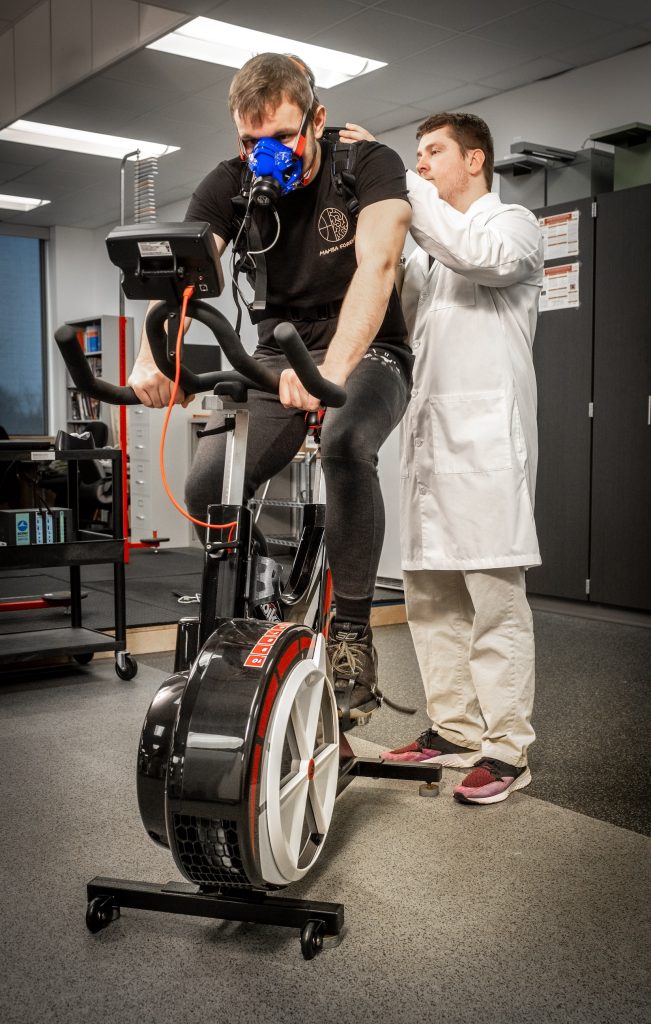This is May: UIndy’s expertise helps INDYCAR drivers and teams

For the city of Indianapolis’s namesake institution, a city known worldwide for ‘The Greatest Spectacle in Racing’ and the Indianapolis Motor Speedway, it only seems fitting that there are some strong ties between the University of Indianapolis and the Indy 500.
For the last few seasons, the Zionsville-based Rahal Letterman Lanigan Racing team has brought its drivers down to the 2,300-square-foot Human Performance Laboratory on campus to test the cardiorespiratory fitness of drivers before the grueling season begins. The Human Performance Laboratory has the very latest equipment for measuring cardiorespiratory fitness and metabolism—key indicators of a driver’s ability to perform at the highest speeds at the highest level possible throughout the long NTT INDYCAR SERIES which lasts from the beginning of March through mid-September.
An interdisciplinary team, which is composed of students and faculty from the Exercise Science program and Krannert School of Physical Therapy including Associate Professor of Exercise Science Dr. Trent E. Cayot and Professor of Physical Therapy James W. Bellew, oversees the graded exercise tests as drivers utilize various machines like the Cosmed K5 metabolic cart, treadmill and stationary bike to measure their cardiorespiratory fitness. Data is collected, analyzed and then given back to the racing team so that any adjustments in the driver’s strength and conditioning programs can be made with weeks to go before the season begins.

“As faculty, we consistently look for unique experiential learning opportunities for our students, so they can use the skills they’ve learned from the classroom/laboratory to serve their community,” said Associate Professor of Exercise Science and Director of the UIndy Human Performance Laboratory Dr. Trent E. Cayot. “We are very grateful for this research collaboration as it has provided an impactful experience for our UIndy students in administering cardiorespiratory assessments for professional athletes while also serving as a community partner.”
The UIndy research team also worked with Rahal Letterman Lanigan Racing on a research study in an attempt to develop a measurement technique to assess the physiological demand that is placed on the driver’s lungs/breathing patterns while inside the racecar. But despite best efforts, the measurement technique was unable to accurately assess the physiological demand of the lungs/breathing patterns due to the extreme vibrations within the racecar while traveling 200+ miles per hour.
“That is how research goes sometimes,” said Cayot. “You test an idea and sometimes it doesn’t work the way you hypothesize. However, the research team was able to learn more about the challenge of collecting this data and plans to collaborate with the racing team on future projects.”
For both undergraduate and graduate students interested in exercise science, public health, or sports management, the University of Indianapolis remains a premiere location for studies, in part due to the deep connections that UIndy and its Kinesiology, Health & Sport Sciences Advisory Board (KHSS) has to organizations like the NCAA, Indiana Sports Corp, USA Track & Field as well the Indianapolis Motor Speedway. More information about these UIndy academic programs can be found on the Department of Kinesiology, Health, and Sport Sciences website.
